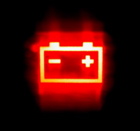Difference between revisions of "Battery"
(Created page with 'File:lighterstill.jpgright|frame ==Origin== Anglo-French ''baterie'', from ''batre'' to beat, from Latin ''battuere'' *[http://en.wikip...') |
m (Text replacement - "http://" to "https://") |
||
| Line 3: | Line 3: | ||
==Origin== | ==Origin== | ||
Anglo-French ''baterie'', from ''batre'' to beat, from [[Latin]] ''battuere'' | Anglo-French ''baterie'', from ''batre'' to beat, from [[Latin]] ''battuere'' | ||
| − | *[ | + | *[https://en.wikipedia.org/wiki/16th_century 16th Century] |
==Definitions== | ==Definitions== | ||
*1a : the act of battering or beating | *1a : the act of battering or beating | ||
| Line 17: | Line 17: | ||
:b : a usually impressive or imposing [[group]] : [[array]] | :b : a usually impressive or imposing [[group]] : [[array]] | ||
==Description== | ==Description== | ||
| − | An [[electric]] '''battery''' is a device consisting of one or more [ | + | An [[electric]] '''battery''' is a device consisting of one or more [https://en.wikipedia.org/wiki/Electrochemical_cell electrochemical cells] that convert stored [[chemical]] energy into [[electrical]] energy. Each battery consists of a [[negative]] electrode (anode) that holds charged [[ions]], a [[positive]] electrode (cathode) that holds discharged ions, an electrolyte that allows ions to move from anode to cathode during discharge (and return during recharge) and terminals that allow current to [[flow]] out of the battery to perform work. |
| − | Batteries are either [ | + | Batteries are either [https://en.wikipedia.org/wiki/Primary_battery primary] (single-use or "disposable") that are used once and discarded or [https://en.wikipedia.org/wiki/Secondary_battery secondary] (rechargeable batteries) that are discharged and recharged multiple times. |
| − | Batteries are made from many [[materials]] including various metals, carbon, polymers and even [[air]]. The most common are lead-acid batteries used in vehicles and lithium ion batteries used for portable electronics. Batteries come in many shapes and sizes, from miniature cells used to power [ | + | Batteries are made from many [[materials]] including various metals, carbon, polymers and even [[air]]. The most common are lead-acid batteries used in vehicles and lithium ion batteries used for portable electronics. Batteries come in many shapes and sizes, from miniature cells used to power [https://en.wikipedia.org/wiki/Hearing_aid hearing aids] and wristwatches to battery banks the size of rooms that provide standby power for [https://en.wikipedia.org/wiki/Telephone_exchange telephone exchanges] and computer [https://en.wikipedia.org/wiki/Data_center data centers]. |
Batteries have been a recent [[focus]] of [[research]] and development, because they are seen as essential in the [[transition]] from fossil fuels to alternative energy, both for transport and [[electricity]] production and for powering portable devices of all kinds. | Batteries have been a recent [[focus]] of [[research]] and development, because they are seen as essential in the [[transition]] from fossil fuels to alternative energy, both for transport and [[electricity]] production and for powering portable devices of all kinds. | ||
| − | Billions of batteries are used each year to power devices as diverse as automobiles to mobile phones. According to a 2005 estimate, the worldwide battery industry generates US$48billion in sales each year, with 6% annual growth.[ | + | Billions of batteries are used each year to power devices as diverse as automobiles to mobile phones. According to a 2005 estimate, the worldwide battery industry generates US$48billion in sales each year, with 6% annual growth.[https://en.wikipedia.org/wiki/Battery_(electricity)] |
[[Category: Chemistry]] | [[Category: Chemistry]] | ||
[[Category: Physics]] | [[Category: Physics]] | ||
Latest revision as of 23:46, 12 December 2020
Origin
Anglo-French baterie, from batre to beat, from Latin battuere
Definitions
- 1a : the act of battering or beating
- b : an offensive touching or use of force on a person without the person's consent — compare assault
- 2: [Middle French batterie, from battre to beat]
- 3: an artillery unit in the army equivalent to a company
- 4a : a combination of apparatus for producing a single electrical effect
- b : a group of two or more cells connected together to furnish electric current; also : a single cell that furnishes electric current <a flashlight battery>
- c plural : level of energy or enthusiasm <needs a vacation to recharge her batteries>
- 5a : a number of similar articles, items, or devices arranged, connected, or used together : set, series <a battery of tests>
Description
An electric battery is a device consisting of one or more electrochemical cells that convert stored chemical energy into electrical energy. Each battery consists of a negative electrode (anode) that holds charged ions, a positive electrode (cathode) that holds discharged ions, an electrolyte that allows ions to move from anode to cathode during discharge (and return during recharge) and terminals that allow current to flow out of the battery to perform work.
Batteries are either primary (single-use or "disposable") that are used once and discarded or secondary (rechargeable batteries) that are discharged and recharged multiple times.
Batteries are made from many materials including various metals, carbon, polymers and even air. The most common are lead-acid batteries used in vehicles and lithium ion batteries used for portable electronics. Batteries come in many shapes and sizes, from miniature cells used to power hearing aids and wristwatches to battery banks the size of rooms that provide standby power for telephone exchanges and computer data centers.
Batteries have been a recent focus of research and development, because they are seen as essential in the transition from fossil fuels to alternative energy, both for transport and electricity production and for powering portable devices of all kinds.
Billions of batteries are used each year to power devices as diverse as automobiles to mobile phones. According to a 2005 estimate, the worldwide battery industry generates US$48billion in sales each year, with 6% annual growth.[1]
